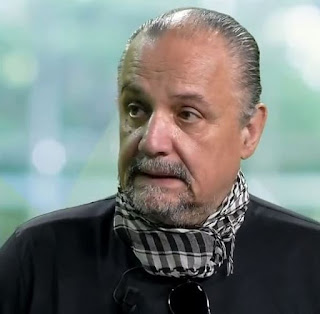Golden Jackal informal Group Europe (GOJAGE)
GOJAGE E-bulletin, 11th of January 2021
The story of the golden jackal and the River Po
All roads lead to Rome
Report by Luca Lapini (Italy) and Ovidiu C. Banea (Romania)
A "wolf" was video recorded and presented via CorriereTV on the 1st of December 2020 in the parking area of Barilla Pedrignano, 40 km from Parma, Italy. This parking area is located near the E35 road between Milan and Bologna, on the southern (right) Po riverbed. On 8th of January 2021 a bioacoustic monitoring with GOJAGE protocol was performed by Luca Lapini near the wild canid observation and golden jackal specific howling were obtained. According to the scientific criteria and known species behavior these observations are consistent with territorial behavior or reproductive golden jackal groups.
Previously, on 6th of June 2017 we reported another alive jackal record in GOJAGE Letters after a golden jackal was video recorded near Mirandola (Modena region) by the field ornithologist Rafaelle Gemmato. Several consequent fieldwork and research was negative to prove the territorial behavior, at that time.
The record of the first territorial reproductive golden jackal species group on the southern part of the River Po induces an urgent action of collaborative work and assessment of the suitable habitat for the species which might spread to the Central and Southern Italy.
Italy: First ascertained reproduction of the European golden jackal South to the Po River
by Luca Lapini
Co-Founder GOJAGE
Zoologist, Dr in Natural Sciences
Zoology Section of the Frulian Natural History Museum of Udine
The European golden jackal (Canis aureus moreoticus) has been recorded in NE Italy first in 1984 (S. Vito di Cadore, Belluno Province). In 1985 it breeds near Udine (Friuli Venezia Giulia), after beginning a great expansion in whole Italy. At present it is widespread in whole north eastern Italy (Friuli Venezia Giulia, Veneto and Trentino-Alto Adige) with about 35 reproductive breeding groups (about 180-190 specimens) distributed from the sea level up to 1900 m a.s.l.
Single dispersal youngs have been recorded also in Piedmont (2020), Lombardy (2017-2020) and Emilia Romagna (2017-2020). Up to now, anyway, the species has never reproduced South to the Po River. The recent segnalation of a single male around to a famous food farm of Parma Province (Emilia Romagna Region) has stimulated two bio-acoustic surveys to verify its local reproductive status, conducted by L. Lapini (Friulian Natural History Museum of Udine), P. Fedele (Forestry Services of the Italian Carabinieri Army), F. Nonnis Marzano (Parma University) and E. Fior (Ente Parchi del Ducato dell’Emilia Occidentale). The results of the standard GOJAGE bio-acoustic survey performed on January, 8th, 2021 gathered positive results, confirming the presence of a first reproductive group of Canis aureus South to the Po River.
This statement is in agreement with various interesting phone-video recording taken from various agents in the night of private surveillance Service (IVRI) of the same famous feed farm. The reproductive group, anyway, dwells some kilometres far from this big feed farm, whose kind cooperation was essential to obtain certainty. A good example of cooperation between private citizen and public Administration in the protection of wildlife.
Canis aureus in Italy is totally protected by National Law 157/1992, and in Europe by Habitat EU Directive 92/43 CEE (V Appendix). The new breeding group of golden jackal opens new interesting perspectives to the colonization of Central and southern Italy by Canis aureus.



































